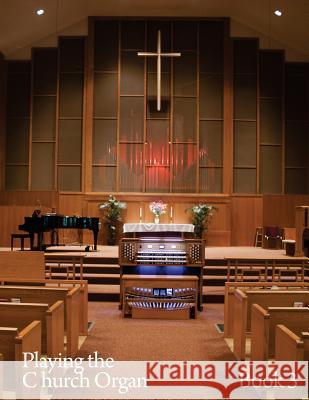Playing the Church Organ Book 3 » książka
Playing the Church Organ Book 3
ISBN-13: 9781492287674 / Angielski / Miękka / 2013 / 82 str.
Playing the Church Organ Book 3
ISBN-13: 9781492287674 / Angielski / Miękka / 2013 / 82 str.
(netto: 157,31 VAT: 5%)
Najniższa cena z 30 dni: 154,82 zł
ok. 13-18 dni roboczych.
Darmowa dostawa!
Book 3 - Building Stop Registrations Using Voice Palette(TM) Stops This book goes into depth into more than just using more stops, instead right along with the new stops you will be playing we investigate techniques of combining stops as well as developing organ technique. The organ can have just one keyboard, but this is sort of rare. Organs have two or more keyboards and pedalboards so that the organist is able to play more than one instrumental line and sound at a time. The organ is one of the few instruments that makes this possible. While pianists play, bringing out the bass melody, then echoing it in the treble, it's all using the same sound. Pianists must work hard to produce a difference in the tone while playing - an organist just chooses a new stop Here we play music that echos itself, music in which the organ accompanies itself, and that use two different instruments playing against each other. We also go into choosing tempos, stroking the keys for sparkling playing, using our secret weapon - silence - to accent notes and guides on how to choose stops by analyzing the music. Coupling - playing stops on two keyboards at one from just one keyboard - is used to build up the chorus sound of the organ, sort of like combining two choirs for a special performance. More clues to matching registrations are accompanied by music that makes it easy for you to see and hear how this all works. Pedals remain optional - and much of this music was written for organs without pedals as composers understood that organists in smaller churches also had money to buy music, so quite a bit of organ music appears in print with and without pedals. We dig deeper into what the stops are and how to use them as well as giving you all sorts of ideas for creating your own stop settings. By the end of this book you will understand the Voice Palette(TM) stops that are behind the engraved stop tablets or drawknobs of your organ. They are like having the ingredients for making a pasta dish not just Italian cooking, but also German, French and even for American macaroni and cheese. These organs today have stops representing many nationalities of organ building and with these organs you are able to dip into each style of organ building and experiment with registrations to make the music sound just as you expect it to, very easily. - 25 pieces written for the organ including 3 fugues, three settings of the choral "Jesu, Meine Freude" by Pachelbel, Bach and Bohm and four settings by Walther. - Learning stop families and traditional stop combinations including the "cornet" are a lots easier when you can actually play and hear them. - "Scholarly Music" turns out to be fun to play when you are using the stops it was written for by the composer. Hear Bach how Bach heard it. - New music that will serve you and your church congregation for many years.











